Get the weekly SPARTANAT newsletter.
Your bonus: the free E-Book from SPARTANAT.
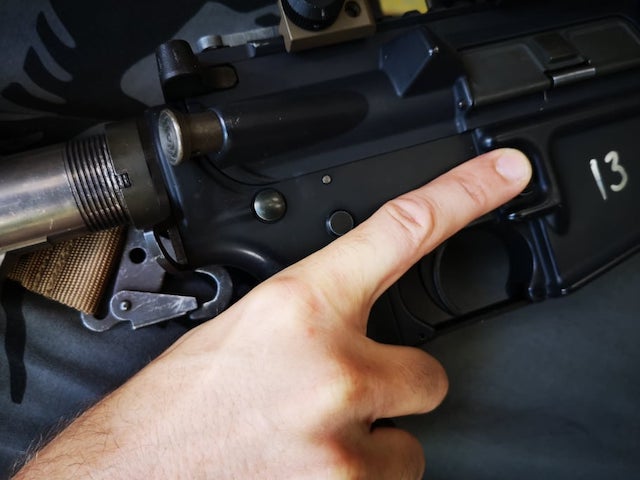
WEAPON TECHNOLOGY: This is my safety (1)
This text delves into the importance of safety mechanisms in firearms, discussing manual and automatic safety features and their functions. It explores trigger safeties and trigger bar safeties, emphasizing the need for adherence to fundamental safety rules.
"This is my safety! - That is my backup!" - Everyone surely knows this scene with a raised index finger pressing an imaginary trigger or the quote from Hoot aka. Eric Bana from the movie "Black Hawk Down". It is probably the most used quote in the shooting scene. However, there is also some truth to this quote...
Today, SPARTANAT brings you the last article by Markus Altoé, whom we mourn - HERE is the obituary for Markus. Markus has passed away unexpectedly and far too early. In his posthumously published article, Markus addresses the complex topic of safety mechanisms in firearms. But one thing to note: a safety doesn't make a firearm safe!
Safety mechanisms are technical devices on firearms that are designed to prevent accidental firing. Typically, one or more components of the lock's mechanics are blocked by a mechanical barrier.
Although many say that an unloaded firearm is the best safety, I personally disagree. The best safety is and always will be the shooter themselves - by adhering to the four fundamental safety rules set by Jeff Cooper and Pat McNamara's Gun Handling Rules. For example, an unloaded weapon violates Jeff Cooper's Rule #1 "Treat all guns as if they are loaded!" This could be a fatal disadvantage especially in the professional firearm carrier field. However, in terms of safety rules, I also like the perspective of Pat McNamara. He divides safety rules into "Gun Handling" and "Rules of the Range," and his first rule in Gun Handling is: "You, the individual shooter, must understand the status of your weapon system."
For decades, various authorities in their Technical Guidelines for Service Weapons demanded that service weapons be equipped with a manual safety and a heavy trigger with a long trigger pull (DA) for the first shot (known as an Anti-Stress trigger). The heavy trigger was intended to prevent accidental firing in stressful situations. The subsequent shots were then fired using a pre-tensioned and therefore light trigger with a short trigger pull (SA). The combination of a manual safety and the use of two trigger types (SA/DA) was thought to be particularly safe. In reality, this only increased training requirements, as the shooter had to remember to manually disengage the safety when using the weapon and had to get used to two different triggers. This often resulted in only hearing a "click" instead of a "bang". Another phenomenon was that the first light follow-up shot sometimes missed the target, as the shooter still had the trigger pull weight and length in mind or muscle memory and accidentally curved the finger again when placing it on the trigger.
In the 1970s, the Technical Guidelines for Service Weapons for the first time required service weapons to be equipped with automatic safety mechanisms. This was the beginning of a new era of firearms such as the Heckler & Koch P7 and, of course, today's Striker Fire Pistols such as the Glock 19, Heckler & Koch SFP9.
Safety mechanisms in firearms - Basics
Most safety mechanisms secure components of the lock (trigger, trigger bar, mainspring, hammer, firing pin). The further the safety mechanism is from the firing pin, the less reliable it is considered. This is because the farther the safety is from the firing pin, the more lock parts are unprotected and can trigger an unwanted shot due to wear or defects.
The design of safety mechanisms varies depending on the weapon system (e.g. pistol, revolver, break action firearms, etc.) and model. There are two approaches:
- Manual safety mechanisms
- Automatic safety mechanisms
However, no safety mechanism is foolproof. This means that a safety mechanism (like any other moving part) is subject to wear, which can lead to malfunctions. Therefore, adhering to the four fundamental safety rules is essential.
In manual safety mechanisms, the shooter must consciously operate an external control, e.g. from "Safe" to "Fire," to secure or release the firearm.
The position of the control indicates the status of the firearm.
The safe state is indicated by a white marking or the (white) letter "S."
The safety lever is positioned against the shooting direction/towards the body for long guns (see Image 1) and usually angled away from the barrel for pistols (see Image 3).
The firearm's unsafe state is indicated by a red marking or the (red) letter "F."

In manual safeties, the trigger, trigger bar, or hammer is usually blocked.
In automatic safety mechanisms, the shooter does not need to operate an external mechanism to release the weapon. The automatic safeties of a firearm are typically internal and are only disengaged when the trigger bow is in the rear third of its movement (just before firing).
We differentiate between passive and active automatic safeties.
With active automatic safeties (also called user-dependent safeties), the internal automatic safety is deactivated by pulling the trigger. In a few systems, there are also external automatic safeties. With active automatic safeties, the firing pin is usually blocked. Since the disengagement of the firing pin safety is triggered by the trigger, most manufacturers also secure (block) the trigger additionally.
Passive automatic safeties (also known as user-independent safeties), such as the shooter and disassembly safety on the HK SFP9/VP9 or HK SFP40/VP40, or the drop safety on Glock Safe Action Pistols, secure the firearm independently of the shooter and only under specific conditions, such as a firearm falling.
Manual safeties are categorized based on how the control is operated (handling):
- Slide safety (see Images 5, 6, 7, and 8)
- Push button safety (see Images 9 and 10)
- Lever safety (see Images 11 and 12

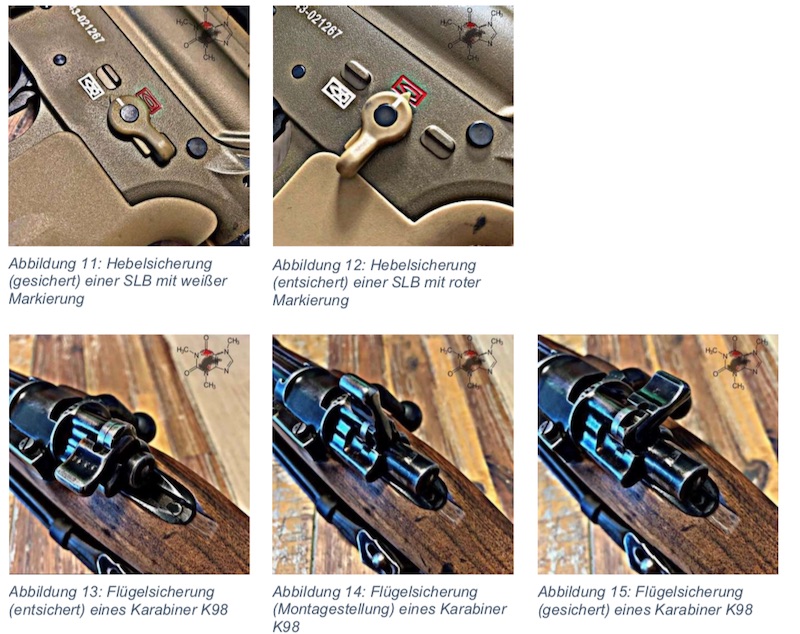
Another follows which part of the lock is to be blocked by a safety device (functionality). Depending on this, one speaks of (see picture 16):
1. Trigger safety
2. Trigger bar safety
3. Striker safety
4. Hammer safety
5. Firing pin safety
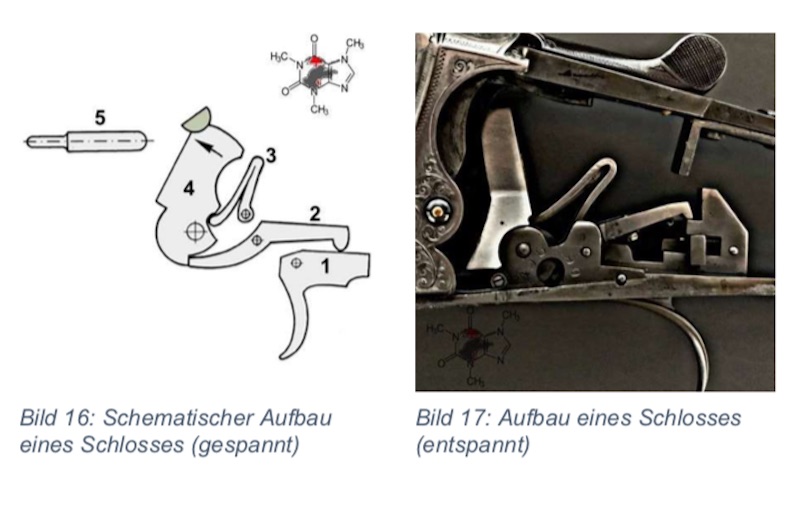
Other safety devices are:
- Drop safety
- Magazine safety
- Grip safety
- Disassembly safety
- Protection safety (internal locking safety)
Safeties on revolvers:
- Hammer safety notch
- Transfer bar
- Cylinder stop
- Rebound slide
- Hammer stop
- Cylinder stop
- Loading gate on single action revolvers
Other components that are intended to improve safety while shooting are safety devices. These include:
- Trigger guard
- Loaded chamber indicator
- Cocking indicator
- Cocking lever
- Decocker/decocking lever
Safeties on firearms - The trigger safety
A trigger safety secures (locks) the trigger against unintentional operation. Trigger safeties are furthest away from the striker and are therefore the least secure safety. They prevent the trigger from being pulled, but do not provide effective lock safety. However, this does not mean that trigger safeties are not secure.
Manual trigger safeties only lock the trigger and are therefore only as good as the weakest point in the locking system - the latch holding the firing pin in place (see picture 18 - red circle).
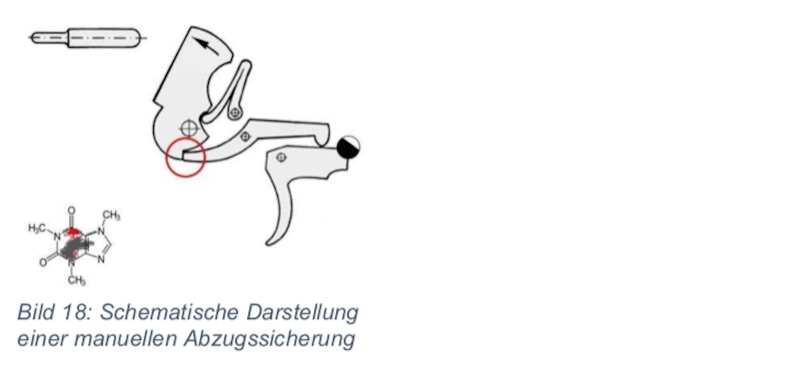
From this it follows:
The quality of a trigger safety depends on the condition of the latch. If it is "too light" or
"worn out", then even the slightest vibration in the latch can cause the trigger bar and firing pin to separate from each other, meaning the shot can fire without the trigger being touched.
Manual trigger safeties are mainly found on shotguns and break-action firearms (e.g.
the so-called Greener safety on a combination gun (see pictures 7 and 8)). But be careful: Not every Greener safety is automatically a trigger safety. Although these were originally developed as trigger safeties, there were also some attempts with trigger bar safeties.
Automatic trigger safeties are usually plastic buttons inset into the trigger and are activated by pressing on the trigger at a right angle with the finger (e.g. on Glock pistols (see picture 19)), unlocking the trigger (see image 20). If the finger or an object presses on the trigger at an angle without pressing the button, the end of the plastic button presses against the frame and the trigger remains locked (see picture 21). This is intended to prevent trigger operation by foreign objects or in the event of the firearm being dropped.
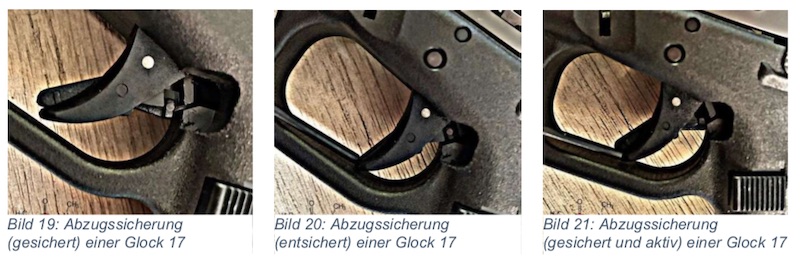
This type of trigger safety was first used on Glock pistols, but nowadays it can be found on more and more service and duty pistols from other manufacturers (e.g.
HK SFP9/SFP40, CZ P10, HS XDM-9).
Safeties on firearms - The trigger bar safety
The trigger bar safety (also known as Schiwy safety) was originally developed by Ludwig Schiwy in 1928 for the Pistole 08 and patented in 1929.
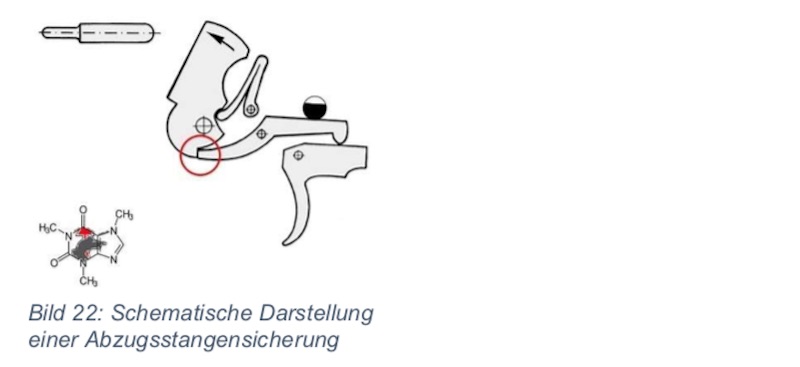
The trigger bar safety secures (locks) the trigger bar (see image 22) and thus indirectly secures the hammer through the sear. At the same time, the trigger bar safety also locks the trigger. As with the trigger safety, the quality of the trigger bar safety depends on the condition of the sear (red circle). If it is "too light" or "worn out," then even the slightest vibration in the sear can cause the trigger bar and hammer to separate, i.e. the shot breaks without the trigger being touched.
In the P08 pistol, the trigger bar is fixed by the safety lever. The protruding trigger bar blocks the bolt. As a result, the P08 pistol cannot be loaded or unloaded when in the locked position.
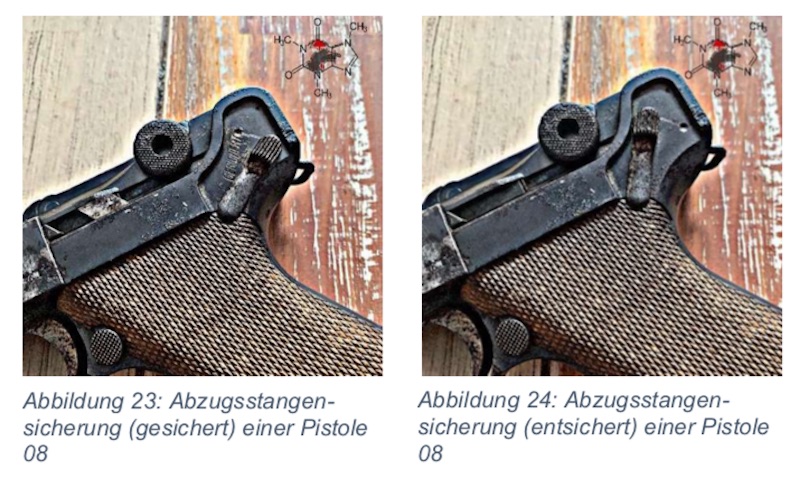
However, safety in trigger bar safeties can be increased by so-called "catch bars" (see image 25). This is a second trigger bar that holds the hammer when the main trigger bar jumps out of the sear or breaks.
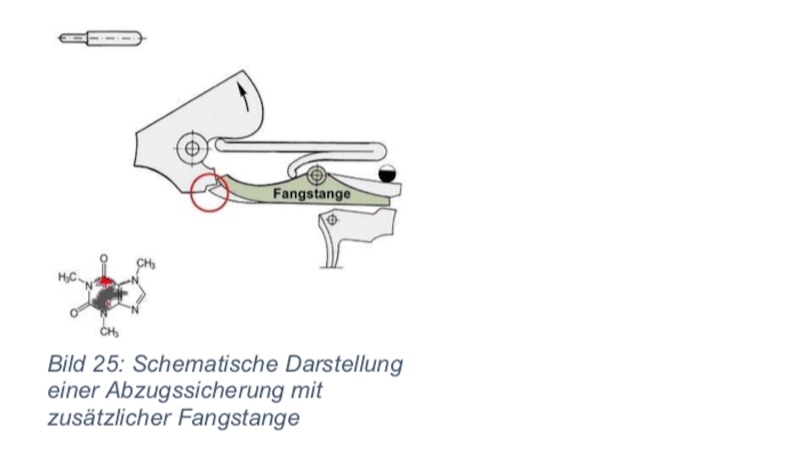
Trigger bar safeties offer additional safety with a simple design.
Trigger bars are mainly found in break-action firearms today, but also in some modern service pistols (e.g. CZ P10 – although here the trigger bar acts directly on the firing pin safety).
– TO BE CONTINUED –
Alpha Security Consulting & Training on the Internet
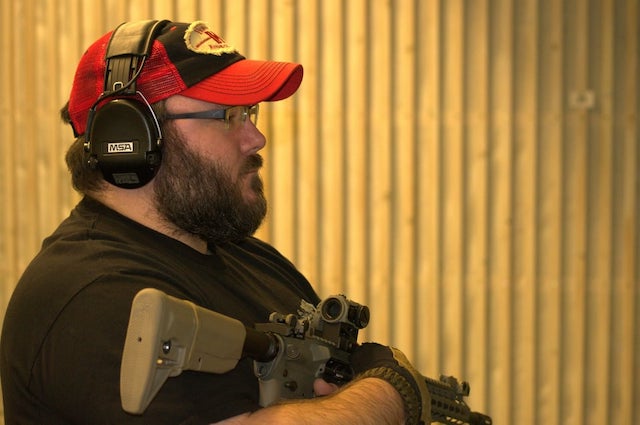
Unforgettable: Markus Altoé – the obituary at SPARTANAT
SPARTANAT is the online magazine for Military News, Tactical Life, Gear & Reviews.
Send us your news: [email protected]
Ad
similar


